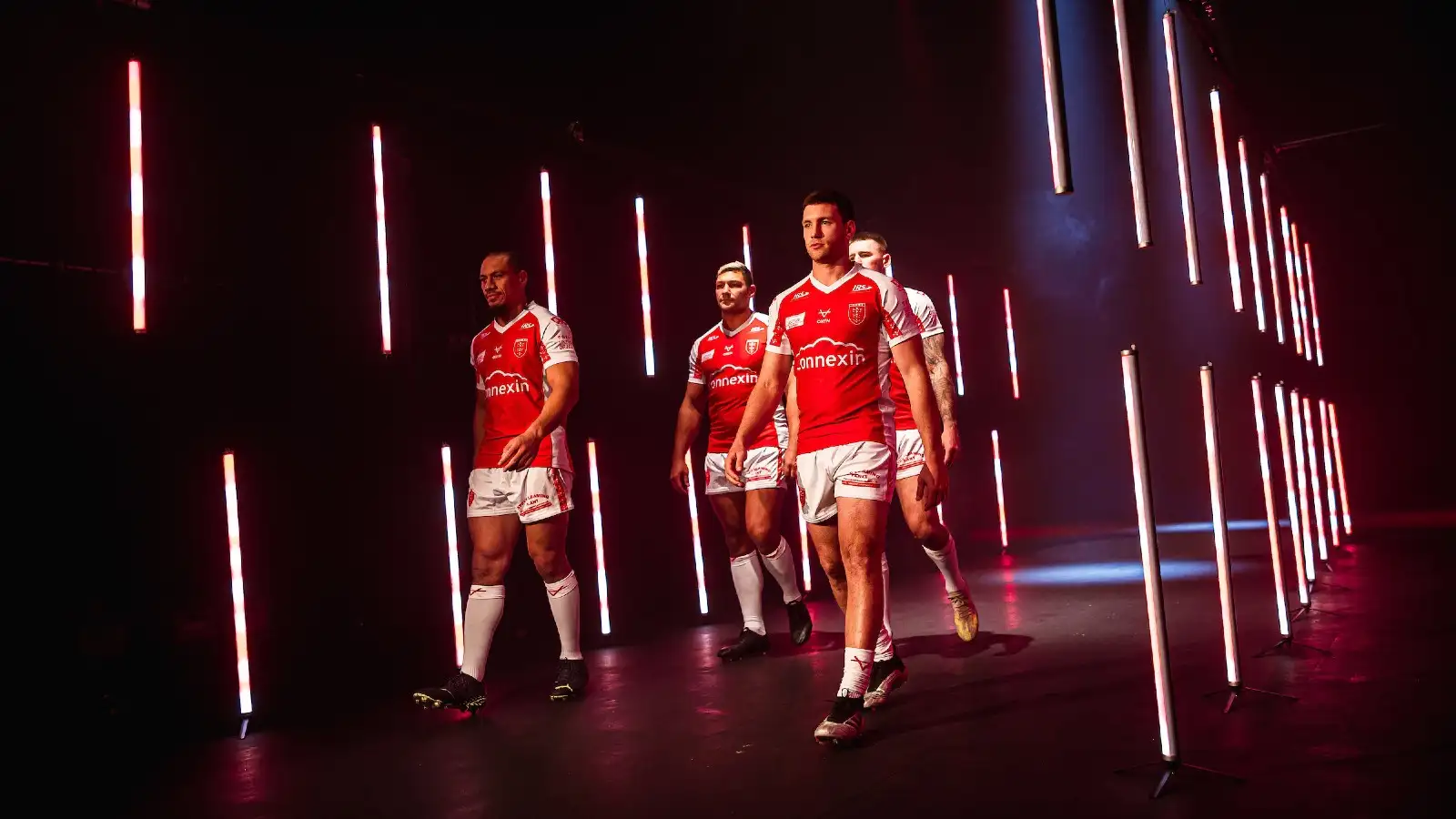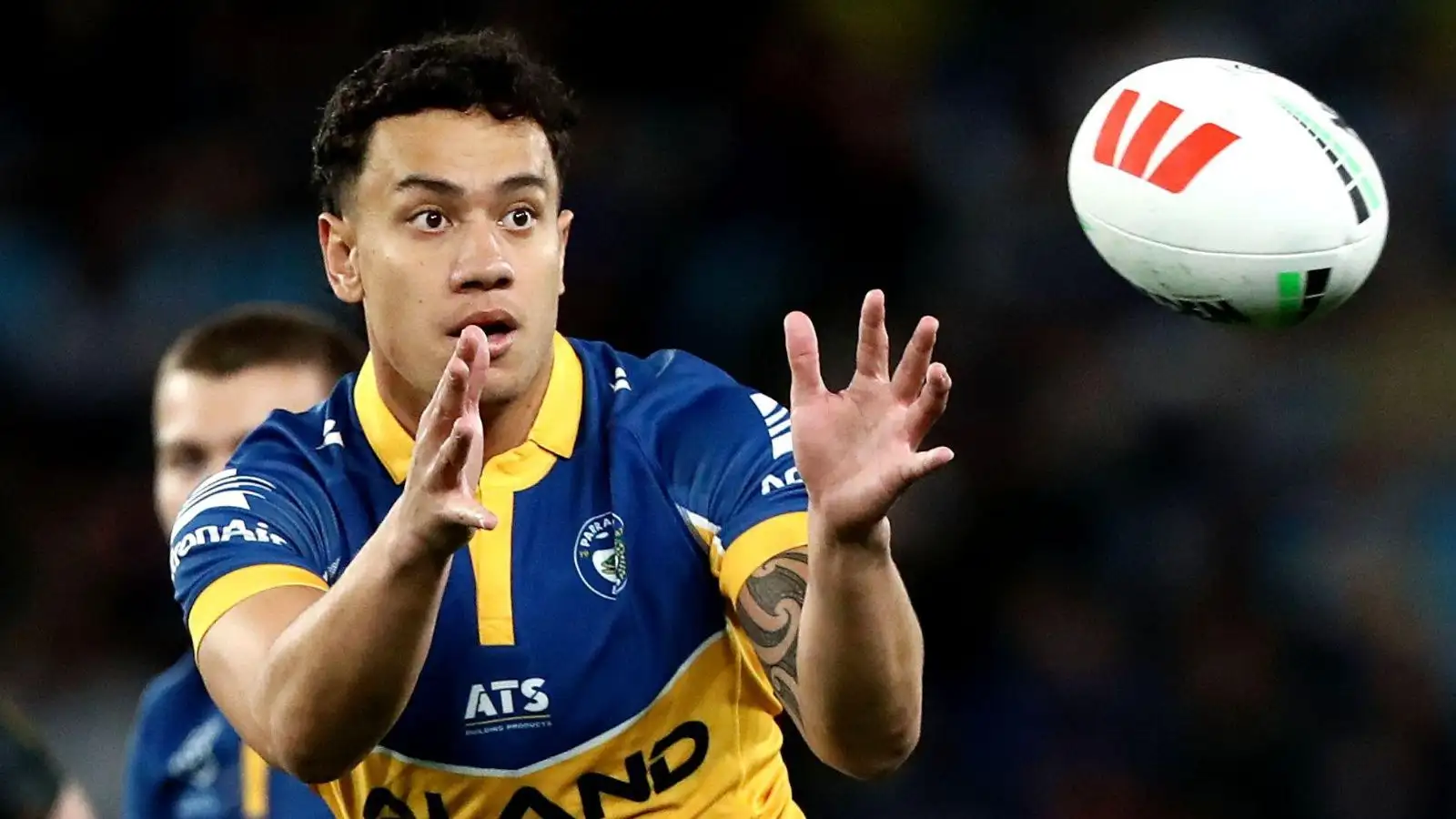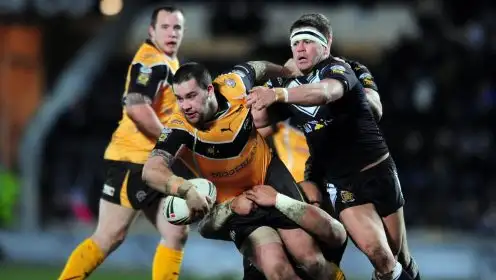Trust the process: Only those on the inside can judge on category grading

Picture by Alex Whitehead/SWpix.com
The IMG criteria for the next era of Super League licensing has landed and while detailed in parts, it remains suitably vague.
It is impossible for anyone outside of the process to truly know what score any club will come back with.
You can have an educated guess in some areas, such as stadium facilities, geographical location and of course on-field performance, but things like turnover, owner investment and so-called ‘fandom’ performance will only truly be known by a select few.
In some ways, that is good. It means that those implementing the criteria and judging what clubs sit where have a process that only they can have authority on. It’s very hard for anyone external to speculate just what order the clubs will sit. On the other hand, some might argue a lack of transparency in some areas makes the licensing process easy to manipulate.
Driving standards but maintaining on-field incentives
But for now, people have to trust the process. Rugby league has, so far, voted to go along with IMG’s recommendations as part of a 12-year strategy. Clubs will again vote to approve these latest proposals, and they are expected to be passed. As long as that happens, then IMG must be given the mandate and trust to go ahead and do what they think is best.
There are some, notably Keighley, that are opposed to the removal of automatic promotion and relegation. Sport should be about what happens on the pitch, and in some ways, these new proposals put that at risk.
However, the aspects that are trying to be improved mean its very unlikely that, as one fan put it, ‘a team would win 50-0 every week and be relegated because they only get 5,000 attendance and two toilets’.
The driving factor is to encourage investment, improve facilities and ultimately grow fanbases. A team that is winning 50-0 every week is unlikely to be able to afford to do so, if it hasn’t got the investment off the field. Likewise, a team with 5,000 attendances and two toilets is less likely to be contributing to an elite sport unless they improve those factors.
What the proposals want to do is stop clubs being able to cling on to elite sport status, hoovering up the ever-diminishing central funding, without a ‘best in class’ approach.
For now, it just seems to be an evolved version of the framing the future documents of the late 90s and the licensing model of the 2010s.
The five criteria categories
- * Fandom – 25% – Match attendances, TV viewership and digital footprint
- * Performance – 25% – Teams ranked 1-36 based on where they finish over past three seasons
- * Finances – 25% – Non-centralised turnover, profitability and owner investment
- * Stadium – 15% – Minimum standards, add value to broadcast quality
- * Catchment – 10% – Area population divided by clubs in the area
MORE: IMG reveal grading criteria with five key areas highlighted
Another interesting footnote was the reference to minimum standards that will be in place alongside the grading criteria. This included reference to our previous story about the requirement for Category A clubs to run a women’s team, which is expected to come in to force in the future.
There are of course some additional areas and as you would expect with IMG’s expertise, a sharp focus on digital and fan engagement.
As someone who works with certain clubs to improve their digital return on investment, increasing their social media followings and engagement, as well as website visits, it is something that is important. But should it determine whether a club is in Super League or not? I don’t think so. It’s a sign of how rugby league has stalled in the past decade or so that we have to seemingly reward clubs for doing something that they should be striving to do as a business anyway.
There is a nod to that in the finance section, which the IMG criteria states reflects the success of fan engagement and business performance.
One notable omission, however, is any reference to the development of players. Previously, clubs with an academy or adding to the player pool, had been factored in to licensing. That appears to no longer be the case. It will therefore be interesting to see how the RFL tackles player development moving forward. Of course, clubs continue to operate elite academies.
All in all, the criteria has nothing really that we didn’t expect. How it works in practice will be the litmus test.
Key areas to watch
Clubs have been working on so-called Digital ROI for several years, as it has been incentivised through central funding. Ensuring you have an engaged online audience, via social media and website, to drive fan numbers and attendances has been the name of the game. Some clubs are well advanced in this area, and people may be surprised as who the top performing clubs outside of Super League are.
Although not part of the criteria, minimum standards are likely to include having a women’s team for clubs wanting to achieve a Grade A licence
There has been some debate about those who own their own ground, versus those who don’t. While ownership isn’t part of the criteria, primacy of tenure is – which could have implications for those who share with football teams, notably Wigan, Huddersfield and Hull.
Might we see the installation of some new big screens at grounds as a way of earning 0.125 points?! Big screen and LED lighting is part of the criteria. Still, that is what it’s all about – making clubs improve.
There are clubs that will gain an obvious advantage through the catchment area criteria. It states this will be defined ‘as the population of all cities and towns’. How neighbouring towns will impact on each other, in comparison to say having two clubs in the same city like Hull, will be interesting to see.
Weighted in favour of existing Super League clubs?
Timing is also a key factor – while allocating grades for 2025 should be relatively straight forward, how soon after the end of the season can we expect to know whether a team has been promoted or relegated?
There have been complaints in the past that being involved in a relegation scrap makes recruiting for the following season difficult. That will increase further if clubs have to wait for a grading decision weeks after the season ends.
Could it be that grading is made public prior to the end of the season, meaning that the impact of on-field performance can be measured by the public somehow in the final weeks of the season? It’s unlikely that the on-field weighting will have enough to mean a win or a loss on the final day of the season impacts where you play the following season, but who knows at this point.
Another possible negative is that the grading criteria is inevitably weighted in the favour of Super League clubs. Clearly those currently in the top flight are going to be able to attract more fans, have better finance and get greater TV viewing figures. It means that clubs aren’t on an equal footing when it comes to the grading process, and those who are in Super League in 2024, will have a leg up on those who aren’t – which makes promotion and relegation this season even more critical.
That being said, it’s hard to see an alternative way of doing things – making everyone start with a blank canvas and selecting a 12-team Super League on that basis could result in too many changes.
You do get the feeling though, once again, that there is a lot of pontificating when the reality is there is probably an underlying desire to elevate certain clubs (probably hipster clubs from big cities), and that inevitably means getting rid of others (ones with naff grounds). Would making those bold steps directly cause more aggro than these endless assessments and criteria? Who knows.
How did clubs react?
Keighley co-owner Ryan O’Neill blasted the proposals, and distributed an 18-page brochure criticising the plan.
He said: “You’ve got to have PHD in astrophysics to understand the grading system they’ve put in place. It’s absolutely crazy. What they’re creating is an elite cartel.
“They’re taking away the opportunity. Why would I work my guts off and throw my money into it for them to say well done Keighley, you’ve won the Championship but London, who finished sixth, are going up?”
Wakefield chairman John Minards, whose club appear in the most imminent danger of dropping out of the top-flight after a poor start to the current campaign, said he remained “broadly positive” about the proposals, while York owner Clint Goodchild said they had “a lot of logic”.
But Leeds Rhinos chief executive Gary Hetherington appeared to accept that a hypothetical situation, in which the second-tier champions were not promoted in favour of a club that finished the season lower down the table, would not be a good look for the sport.
“A lot more thought has to go into that,” admitted Hetherington, whose Rhinos look set to be one of a small handful in line for an A grade when the initial dummy rankings are released at the end of this season. “This is a recommendation caveated by the fact it is a work in progress.”
The never ending off-field debates will continue for at least the next 18 months until the first grades are revealed – how much controversy there will be then and each year after, remains to be seen.
The priority has to be that it doesn’t detract from the on-field product, which appears to have enjoyed an encouraging start to 2023.
What do you think of IMG’s criteria proposals? Let us know in the comments below.



